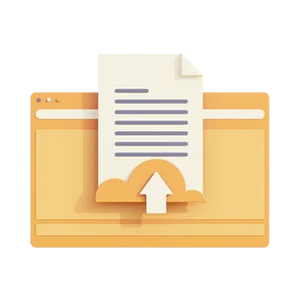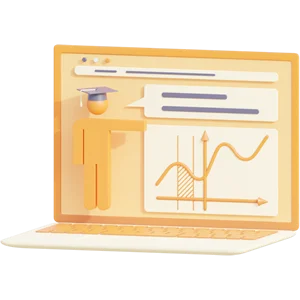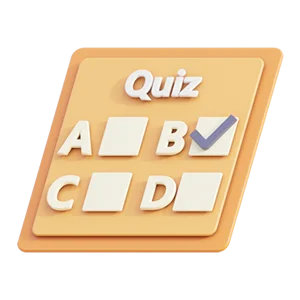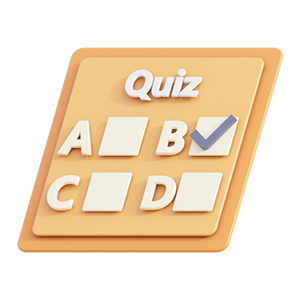Patton: The Human Body in Health & Disease, 7th Edition
Chapter 01: Introduction to the Body
Patton: The Human Body in Health & Disease, 7th Edition
MULTIPLE CHOICE
1. Which word is derived from the Greek word meaning “cutting up”?
a. Dissection
b. Physiology
c. Pathology
d. Anatomy
ANS: D PTS: 1 DIF: Memorization
REF: P. 3 TOP: Introduction
2. Which word is defined as the study of the function of living organisms and their parts?
a. Dissection
b. Physiology
c. Pathology
d. Anatomy
ANS: B PTS: 1 DIF: Memorization
REF: p. 3 TOP: Introduction
3. Which word is defined as the scientific study of disease?
a. Dissection
b. Physiology
c. Pathology
d. Anatomy
ANS: C PTS: 1 DIF: Memorization REF: P. 3 TOP: Introduction
4. Cells
a. are more complex than tissues.
b. are the first level of organization in the body.
c. are the smallest living units of structure and function in the body.
d. both B and C.
ANS: C PTS: 1 DIF: Application REF: p. 6 TOP: Structural levels of organization
5. A group of cells that act together to perform a function is called a(n)
a. molecule.
b. organ.
c. tissue.
d. organism.
ANS: C PTS: 1 DIF: Memorization REF: p. 6 TOP: Structural levels of organization
6. The heart is an example of a(n)
a. organ.
b. tissue.
c. organism.
d. system.
ANS: A PTS: 1 DIF: Application REF: p. 6 TOP: Structural levels of organization
7. The levels of organization from most simple to most complex are
a. cell chemical organ tissue system.
b. tissue cell chemical organ system.
c. chemical tissue cell organ system.
d. chemical cell tissue organ system.
ANS: D PTS: 1 DIF: Memorization REF: p. 5 TOP: Structural levels of organization
8. When using directional terms to describe the body, it is assumed that the body is in what position?
a. Supine
b. Anatomical
c. Lateral
d. Prone
ANS: B PTS: 1 DIF: Memorization REF: p. 7 TOP: Anatomical position
9. The supine position
a. describes the body lying face up.
b. is also called anatomical position.
c. describes the body lying face down.
d. both A and B.
ANS: A PTS: 1 DIF: Memorization REF: p. 7 TOP: Anatomical position
10. The prone position
a. describes the body lying face up.
b. is also called the anatomical position.
c. describes the body lying face down.
d. both B and C.
ANS: C PTS: 1 DIF: Memorization REF: p. 7 TOP: Anatomical position
11. Because humans walk upright, the term dorsal can be used in place of the term
a. inferior.
b. posterior.
c. anterior.
d. distal.
ANS: B PTS: 1 DIF: Memorization REF: p. 7 TOP: Anatomical direction
12. The opposite term for posterior in humans is
a. superior.
b. anterior.
c. ventral.
d. both B and C.
ANS: D PTS: 1 DIF: Application REF: p. 7 TOP: Anatomical direction
13. The opposite term for superficial is
a. deep.
b. inferior.
c. posterior.
d. medial.
ANS: A PTS: 1 DIF: Memorization REF: p. 7 TOP: Anatomical direction
14. The body section that divides the right ear from the left ear is a section.
a. frontal
b. sagittal
c. coronal
d. transverse
ANS: B PTS: 1 DIF: Application REF: p. 9 TOP: Planes or body sections
15. The body section that divides the nose from the back of the head is a section.
a. frontal
b. sagittal
c. midsagittal
d. transverse
ANS: A PTS: 1 DIF: Application REF: p. 9 TOP: Planes or body sections
16. A section that divides the body into mirror images is a section.
a. frontal
b. coronal
c. midsagittal
d. transverse
ANS: C PTS: 1 DIF: Application REF: p. 9 TOP: Planes or body sections
17. The two major body cavities are called
a. thoracic and abdominal.
b. thoracic and pelvic.
c. dorsal and ventral.
d. mediastinum and pleural.
ANS: C PTS: 1 DIF: Memorization
REF: p. 9 TOP: Body cavities
18. The liver can be found in the
a. upper right quadrant.
b. epigastric region.
c. hypogastric region.
d. both A and B.
ANS: D PTS: 1 DIF: Application REF: p. 10 TOP: Body cavities
19. The word “leg” correctly describes the
a. area from the hip to the foot.
b.
c. area from the knee to the ankle. area between the hip and the knee.
d. femoral area.
ANS: B PTS: 1 DIF: Memorization
REF: p. 13 TOP: Body regions
20. The human body tries to maintain a constant body temperature. This is an example of
a. homeostasis.
b. a positive feedback loop.
c. an effector.
d. a sensor.
ANS: A PTS: 1 DIF: Application REF: p. 14 TOP: The balance of body functions
21. The part of a feedback loop that has the direct effect on the regulated condition is called
a. homeostasis.
b. the effector.
c. the sensor.
d. the control center.
ANS: B PTS: 1 DIF: Memorization REF: p. 14 TOP: The balance of body functions
22. The part of the feedback loop that detects a change in the regulated condition is called
a. homeostasis.
b. the effector.
c. the sensor.
d. the control center.
ANS: C PTS: 1 DIF: Memorization REF: p. 14 TOP: The balance of body functions
23. The part of the feedback loop that compares the present condition within a body part or region to its homeostatic condition is called
a. homeostasis.
b. the effector.
c. the sensor.
d. the control center.
ANS: D PTS: 1 DIF: Memorization REF: p. 14 TOP: The balance of body functions
24. When your body temperature drops below normal, your muscles begin to contract rapidly, making you shiver and generating heat. In this case your muscles are acting as the
a. sensor.
b. effector.
c. control center.
d. both A and C.
Preview document (3 van de 576 pagina's)
Voordelen van Knoowy
€ 25,87
 Niet tevreden? Geld terug
Niet tevreden? Geld terug
 Document direct te downloaden
Document direct te downloaden
 € 0,50 korting bij betalen met saldo
€ 0,50 korting bij betalen met saldo
-
 Ontvang gratis oefenvragen bij document
Ontvang gratis oefenvragen bij document

Specificaties
- School: Chamberlain College Of Nursing
- Opleiding: NURSING
- Studiejaar: 2023-2024
Document
- Rubriek: Tentamens
- Gemaakt op: 26-07-2024
- Type: .pdf
- Pagina's: 576
- Taal: English
Verkoper
Verdienen aan je samenvattingen?
Vakken van NURSING - Chamberlain College Of Nursing
Meer NURSING ›ati comprehensive comprehensive predictor computer science fundamentals health care health care / nursing health care/ nursing healthcare hesi hesi rn exit maternal newborn med surg medical nursing medical surgical mental health nurs nursing nursing & health nutrition pathophysiology pediatrics pharmacology test bank tncc
Al meer dan 146.000 tevreden studenten
-
JadeVanBignoot
Knoowy is zeker aan te raden. Goedkoop en je krijgt meteen je document!
-
StudentsOnly
Knoowy is voor ons een extra verkoopkanaal en biedt de mogelijkheid samenvattingen online te verkopen.
-
Olivier
Prima samenvattingen van veel verschillende vakken die je goed kunt gebruiken.
-
Simone Dijkstra
Juiste plek voor een goeie voorbereiding op je komende toets.
-
CelesteDevoldere
Super hulp bij het studeren en bespaart veel kostbare tijd.
-
sterrevanlommel
Knoowy is heel handig om te gebruiken. Zeker aan te raden.
-
kamalm
Uitgebreid aanbod en zeer gebruiksvriendelijk! Al meerdere malen gebruik gemaakt en zoals steeds tevreden.
-
iljanijenhuis
Het is een fijne en uitgebreide website met helpende documenten en samenvattingen!
 Actie: ontvang 10% korting bij aankoop van 3 of meer items!
Actie: ontvang 10% korting bij aankoop van 3 of meer items!
Actie: ontvang 10% korting bij aankoop van 3 of meer items!









